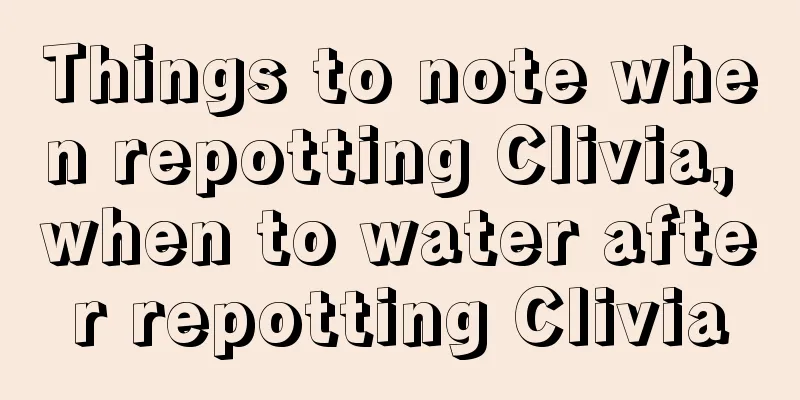How to water succulents correctly (detailed steps and tips for watering succulents)

The correct way to water succulents Since I started growing succulents, I have summarized the secrets of watering succulents. Just remember: control your hands and water less . Succulents usually die from waterlogging, and large seedlings rarely die from drying out . Today I will water succulents in 5 situations and explain the specific methods in detail: ①Sowing and watering seedlingsWhen sowing, it is recommended to use a seedling pot with holes at the bottom and place a pot without holes underneath to hold water . After adding the seedling soil to the seedling pot, place it in the pot and let it absorb water. Then dip a toothpick in water, then dip the seeds and gently place them on the soil surface. Keep the soil moist at all times. You can cover the soil in the first few days to keep moisture in. After germination, you don't need to cover it, and remember to ventilate it. After germination, the same applies to watering. Sucking water from the bottom of the pot will not easily shake the seedlings, and the root system can be more stable. Spraying water from a kettle will easily wash away the seedlings. Whether it is sowing or leaf cuttings, the root system of succulents is not particularly large when they are three to five centimeters long, and they are mainly at the top of the soil in the flowerpot. In order to make the root system of succulents strong and vigorous, it is best to immerse the pot at the bottom . Don't soak the pot for too long. It's enough for the soil to absorb about half of the water. The water will slowly seep up, so you won't water too much. It's hard for beginners to grasp this degree. You can use a toothpick or a wooden stick to poke the soil to see. With experience, you can estimate the watering time . It doesn’t matter if the pot is soaked for too long. If the succulents are planted outdoors with good ventilation and fast evaporation, there is no need to worry about the water melting. If it is an indoor balcony, open the window for ventilation. If the ventilation is insufficient, if it is summer and the temperature is high, you may be afraid of black rot. You can turn on a small fan and blow it. ② Watering the newly acquired succulentsMost of the newly purchased succulents have their roots trimmed, generally because they are afraid that the succulents they buy will be infected with diseases and insect pests. After buying them, the dry roots are trimmed, and then they are left to air-dry for an hour or two , disinfected with potassium permanganate, and left to air-dry for an hour or two before planting . This cannot be planted and then watered, otherwise the temperature will be slightly higher, and it will easily rot and melt. You must use moist soil (not too wet), then plant the dried succulents, and don't water them. Wait until the soil is slightly dry, then soak the pot from the bottom, and soak the pot for a shorter time. The soil at the bottom of the pot is moister, and the moisture will slowly transfer to the surface of the soil . If it is too wet, ventilate more, and generally the roots will grow in one or two weeks. Newly planted succulents should be watered normally in the first two months . Generally, just keep the soil moist, and after the roots grow well, follow the next 3-5 steps to cultivate. ③ Watering in spring, autumn and growing seasonIn most places, spring and autumn are the growing seasons. In the northern areas with heating and the warm southern areas, plants can continue to grow in winter, which are all growing seasons. During the growing season, except for succulents with healthy root systems that are not under controlled cultivation, you can water them when the soil is mostly dry. If you water too much, the succulent will grow too tall . For succulents that are kept under control, you can wait until the outer two layers become wilted before watering . ④Watering during high temperatures in summerIn most areas, when the temperature is high in summer, most succulent plants will go dormant when the temperature exceeds 30℃. Some varieties of succulent plants, such as the Master Plant, do not need to be watered after dormancy . For summer-type succulents, such as Sunset and Guanghan Palace, the temperature should be below 35℃, ventilation should be good, and watering should be normal. For general succulents, you still need to water them around the flowerpot to keep the soil slightly moist. A small amount of water can allow the succulents to maintain basic growth without causing them to become waterlogged . For young seedlings, water them slightly more and keep the soil semi-moist. Young seedlings have poor resistance and will easily die if they are cut off from water for too long. ⑤ Watering in winterIn winter, when the temperature is below 7 or 8 degrees, many succulents also enter dormancy . Except for Sedum, for other succulents, just keep the soil slightly moist. In winter, the temperature is low and there is little sunlight, so succulents hardly grow. If there is too much water, succulents will grow too tall. For example, the succulent Sedum can be watered at zero degrees. It can be grown outdoors at minus 20 degrees, without watering, and it will not freeze to death even if it snows. In a room with heating, water it according to the growing season in winter, and remember to ventilate it when the temperature is high during the day. |
<<: How to prune tomatoes to get more fruits (teaching you several easy-to-learn topping methods)
Recommend
High-yield planting technology of radish
In rural areas, many people grow radishes, but re...
How to care for daffodils during their dormancy period, and how to manage them after their dormancy period
1. How to care for and treat daffodils during the...
The correct steps for cutting Monstera and how to care for it after cutting
1. Correct cutting steps 1. Time selection: For M...
How to prune blue flower
Pruning time The best time to prune blue flowered...
How to care for Yuanbao succulent
Growing conditions of Yuanbao succulent Yuanbao s...
Cultivation methods and precautions of Staghorn Begonia
1. Breeding methods 1. Light: It prefers an envir...
How to deal with lilies not blooming
1. Choose large bulbs 1. Reason: Usually the qual...
How to sow Ebisu Smile
Seed selection of Ebisu Smile Fresh seeds germina...
What kind of flowerpot is good for money tree
What kind of flowerpot is suitable for money tree...
How many times a year does the scented lily bloom? What is the meaning of the scented lily?
1. How many times a year does the scented lily bl...
The best way to graft apple seedlings onto pear trees
Fruit tree grafting technology is a common method...
Why does the pomegranate tree only grow branches but not flowers?
Many people plant pomegranate trees in their home...
How to cultivate Nepenthes to grow a cage
Nepenthes growing conditions Nepenthes prefers a ...
Honeysuckle planting methods and management techniques
Honeysuckle, also known as double flower, honeysu...
Succulent plants turn green like kohlrabi? If you grow these 5 species, they will bloom more beautifully than flowers in summer!
Ji Longyue In summer, the moonflower will turn in...









